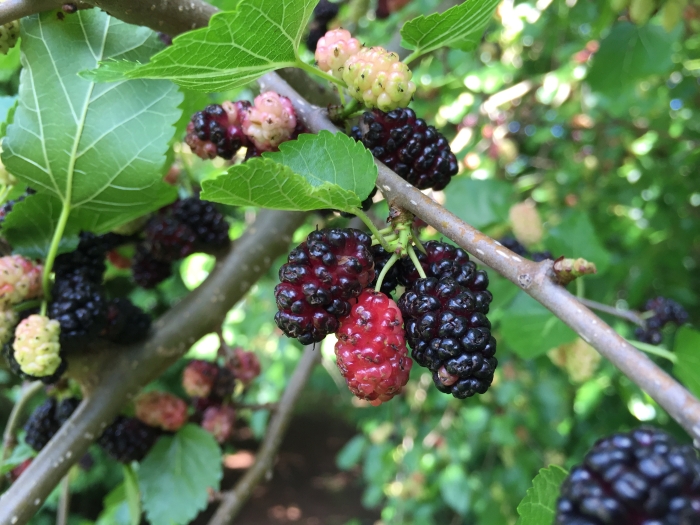Red Mulberry
(Morus rubra)
Red Mulberry (Morus rubra)
/
/

Famartin
CC BY-SA 4.0
Image By:
Famartin
Recorded By:
Copyright:
CC BY-SA 4.0
Copyright Notice:
Photo by: Famartin | License Type: CC BY-SA 4.0 | License URL: https://creativecommons.org/licenses/by-sa/4.0 | Uploader: Famartin | Publisher: Wikimedia Commons | Title: 2017-05-29_14_12_27_Red_Mulberry_fruit_along_Kinross_Circle_in_the_Chantilly_Highland_section_of_Oak_Hill,_Fairfax_County,_Virginia.jpg | Notes: |


















































Estimated Native Range
Summary
Morus rubra, commonly known as Red Mulberry, is a deciduous tree native to rich woods, bottomlands, and forest edges in the Southeastern and Midwestern United States. It typically grows to a height of 70 feet and a width of 35-40 feet, with a lifespan of up to 125 years. The tree has a rounded form with dense foliage, and its leaves are large, heart-shaped, and toothed, with the upper surface being rough to the touch and the underside softly hairy. The inconspicuous flowers, small and yellowish-green or reddish-green, appear as the leaves emerge in spring. Morus rubra is dioecious, with male and female flowers on separate trees, though occasionally they may be found on the same tree. The fruit resembles a blackberry, is 2–3 cm long, and ripens from pale green to red or dark purple, attracting birds and wildlife. The leaves turn yellow in the fall, adding seasonal interest.
Red Mulberry is valued for its sweet, edible berries and as a native species that supports local ecosystems. It is used in wildlife gardens, for naturalizing, and occasionally as a shade tree in larger landscapes. The tree is adaptable to a range of soil types, from well-drained to moist, and requires full sun to part shade for optimal growth. While it is relatively easy to maintain, it can be messy due to falling fruit and may suffer from bacterial blight or powdery mildew. Gardeners should be aware that the Red Mulberry can hybridize with the invasive White Mulberry (M. alba), potentially affecting local ecosystems.CC BY-SA 4.0
Red Mulberry is valued for its sweet, edible berries and as a native species that supports local ecosystems. It is used in wildlife gardens, for naturalizing, and occasionally as a shade tree in larger landscapes. The tree is adaptable to a range of soil types, from well-drained to moist, and requires full sun to part shade for optimal growth. While it is relatively easy to maintain, it can be messy due to falling fruit and may suffer from bacterial blight or powdery mildew. Gardeners should be aware that the Red Mulberry can hybridize with the invasive White Mulberry (M. alba), potentially affecting local ecosystems.CC BY-SA 4.0
Plant Description
- Plant Type: Tree
- Height: 35-50 feet
- Width: 35-40 feet
- Growth Rate: Moderate
- Flower Color: N/A
- Flowering Season: Spring
- Leaf Retention: Deciduous
Growth Requirements
- Sun: Full Sun, Part Shade
- Water: Medium
- Drainage: Fast, Medium, Slow
Common Uses
Bee Garden, Bird Garden, Butterfly Garden, Deer Resistant, Drought Tolerant, Edible*Disclaimer: Easyscape's listed plant edibility is for informational use. Always verify the safety and proper identification of any plant before consumption., Erosion Control, Fire Resistant, Rock Garden, Salt Tolerant
Natural Habitat
Rich woods, bottomlands, and forest edges
Other Names
Common Names: Roter Maulbeerbaum, Moral Rojo, Mûrier Rouge, Rött Mullbär
Scientific Names: , Morus rubra, Morus rubra var. rubra, Morus canadensis, Morus scabra, Morus virginica, Morus argutidens, Morus caroliniana, Morus missouriensis, Morus pensylvanica
GBIF Accepted Name: Morus rubra L.